POSTS
Persona 5
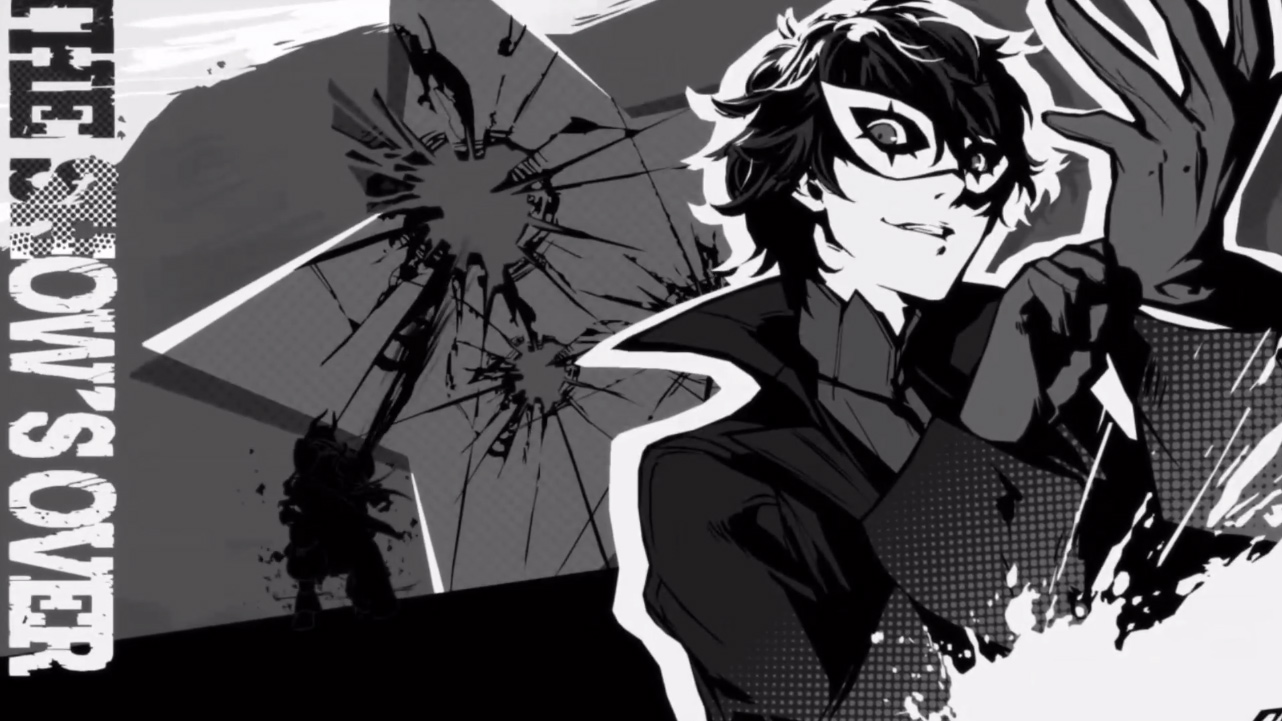
The review goes into heavy spoilers about the first twenty hours and light spoilers later on.
If only there were evil people somewhere insidiously committing evil deeds, and it were necessary only to separate them from the rest of us and destroy them. But the line dividing good and evil cuts through the heart of every human being. And who is willing to destroy a piece of his own heart?
- The Gulag Archipelago, Aleksandr Solzhenitsyn
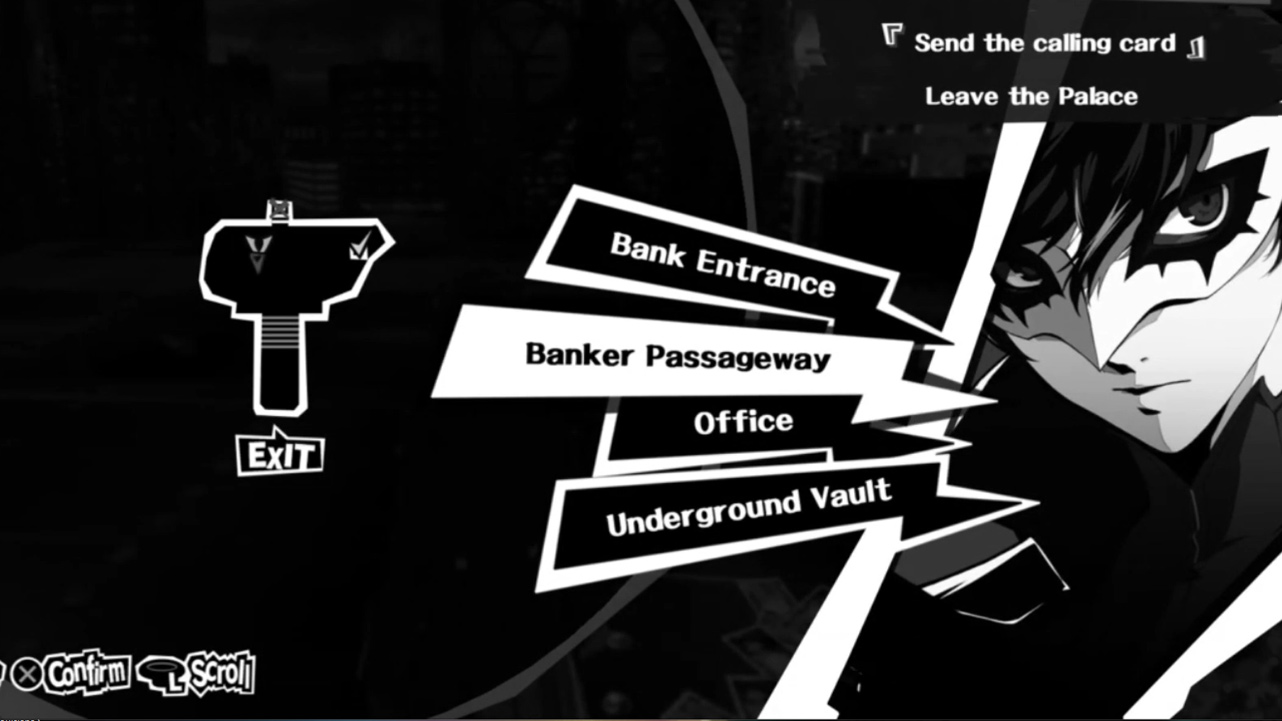
I won’t focus on the stylish mixed 2D/3D art direction and jazzy music direction (incredible job, Atlus, the Persona 5 developers)

I won’t focus on the color accessibility, which has been rock solid almost up until the end and seemed to be a conscious design decision to make things high contrast. All screenshots in this review are taken from my greyscale playthrough. (good job, Atlus)

I won’t focus on the solid three-legged gameplay mechanic of choosing daily activities, participating in story, and engaging in turn-based combat; a formula that breaks up the classic JRPG flow of story and combat (good job, Atlus)
All of these elements you can find in a myriad of reviews already written about the game. This is a fantastic game that jockeys for Top 3 RPGs of all time for me, displacing the excellent Mass Effect 2.
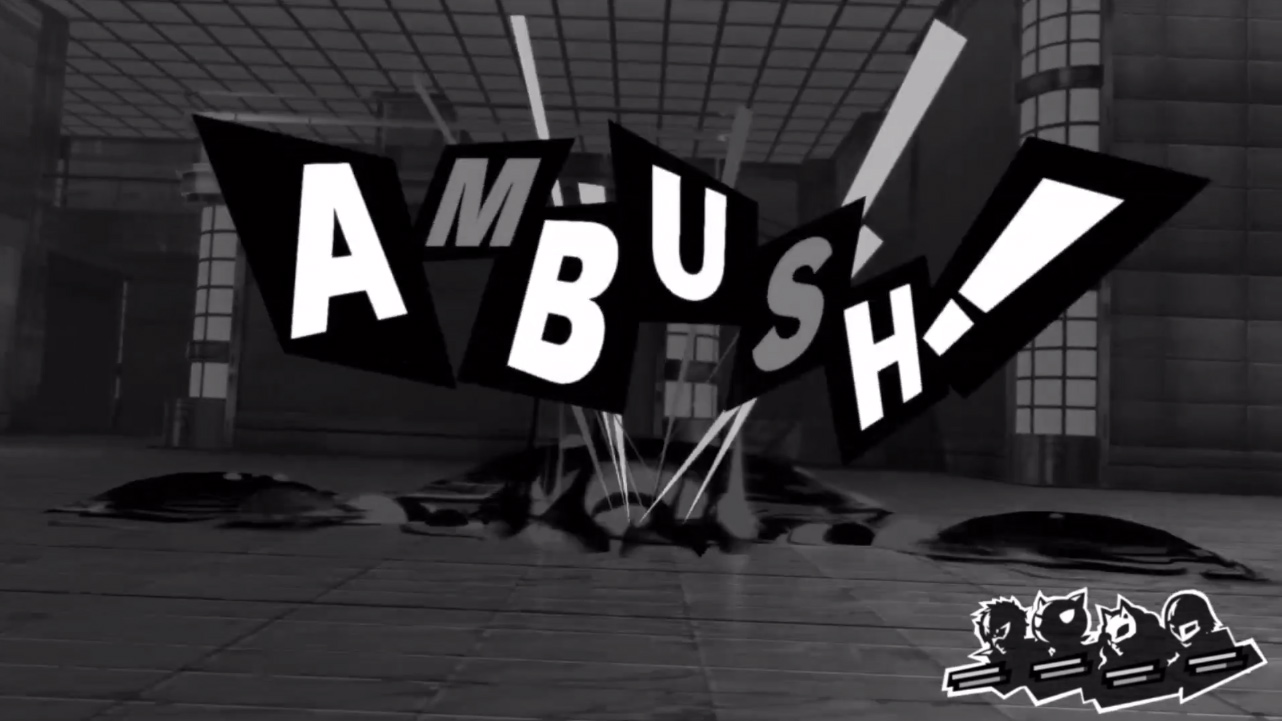
It’s not a game
I’m going to talk mainly about something that can only be depicted in this fashion in a video game.
Abuse. Therapy. Recovery.
I’m not saying that books, movies, music, or illustrations can’t depict this cycle, because they certainly can. But I feel that this specific sense of delivery is not only unique, but only possible through a game, and Atlus was brave enough to go with it.
These aren’t fun topics. These aren’t things that make a player feel good. Heck, these are really touchy, societally shameful items that we just want to sweep under the rug most of the time and pretend don’t exist.
This is the only form of art that can fully express that time scale: an interactive, long form text adventure (160 hours was my final playtime) that attempts to explore people. It emulates the passage of time over an entire year, simulating events down to the individual day to give you a feeling of depth and weight to the events.
I’m not a robot AI challenging you
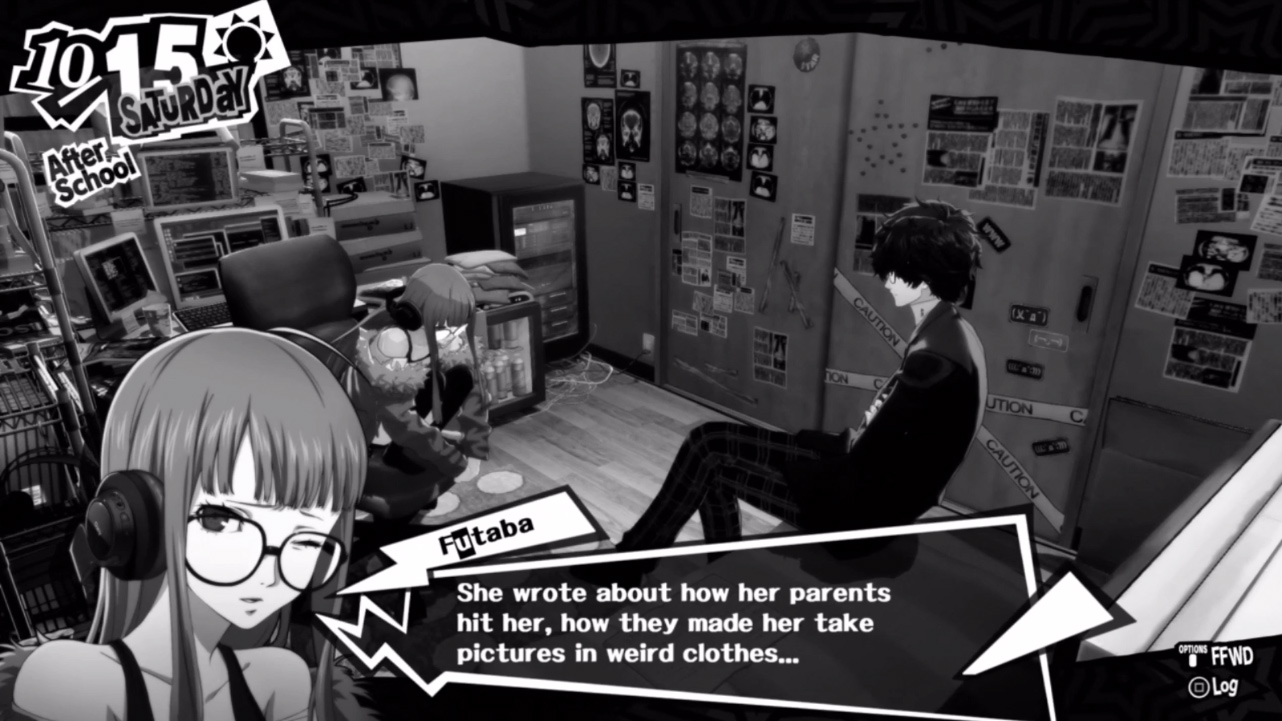
Ostensibly, you play as a high transfer school student, “Joker” (due to his wildcard superpower), transferred on probation for a crime he didn’t commit.
Ignore that.
Joker is a mental health resource and therapist who assists and carries emotional labor for a variety of folks. He listens silently and nods along, and makes comments rarely. When he does talk, he speaks with a subtle gesture of his arm but is unaccompanied by speech. As a silent protagonist, he works frighteningly well in this role.
I’m not a phantom

The game is about building confidant “links” with Joker’s supporting cast as he prepares for ever increasing stakes. This is similar to Mass Effect 2 where building your relationships with your crew sets you up for the suicide mission at the end of the game.
However, Mass Effect 2 is a game about building relationships with superheroes. Everyone on Shepard’s (the Mass Effect protagonist) crew is a certified badass in something - military, tech, magic powers, piloting, you name it. If they weren’t, they wouldn’t be on the crew.
Persona 5 is a game about building relationships with people.
Not people with unusually special, extraordinary skills. Plain ol’ people. A strict older gentleman who runs a coffee and curry shop. An honor student trying to get into her top pick Tokyo university. A kid in an arcade bullying others and being bullied. A street fortune teller swindling people to make ends meet. A disgraced politician trying to atone his way back into office. A career-driven prosecutor working through an intense caseload and wanting the best for her sister.
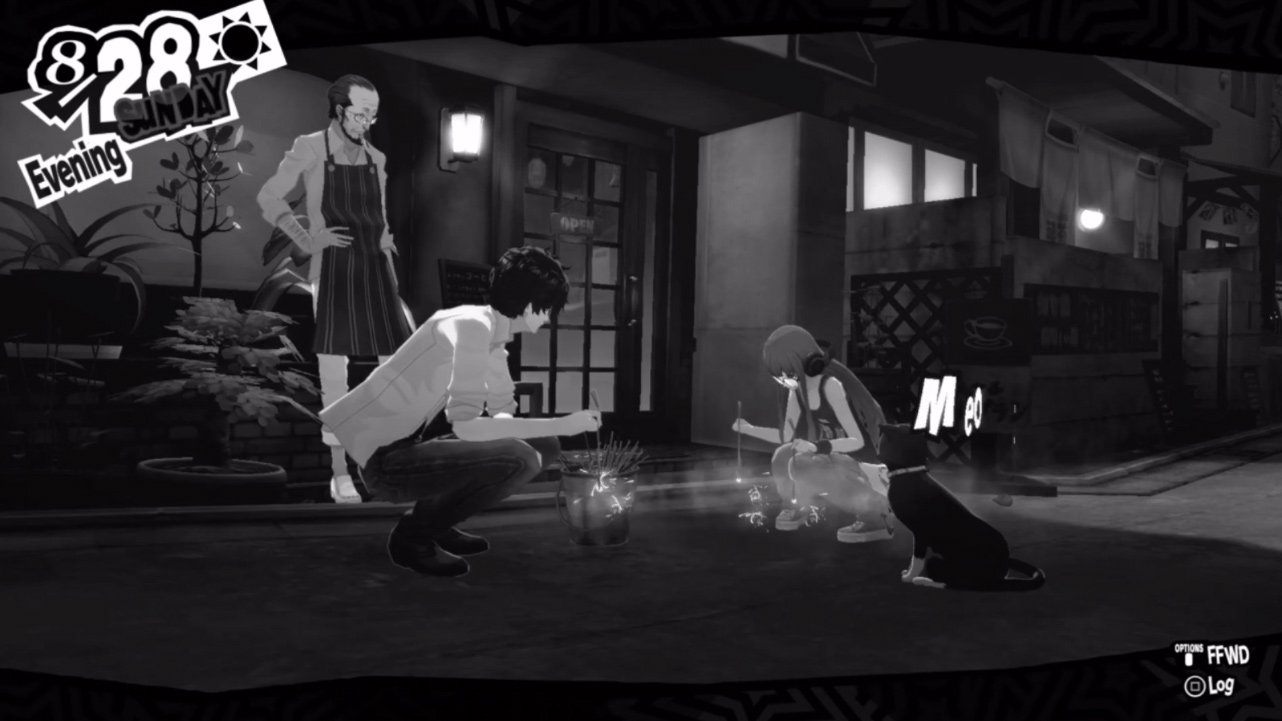
Their trials and tribulations, their simple victories, their strengths and weaknesses all come to the limelight. Some of Joker’s acquaintances grow and change a lot over the course of the game, tracked over a year, and some grow far less.
Many of the characters face difficult challenges with their past - whether mistreated by society or other people - and the ways they cope with it. Many are trapped in their situation with no escape until Joker listens to them. Joker is forced to pick and choose among the relationships he wants to build, and those he’s willing to let lag. Initially, the need to build this trust is driven by direct benefits to the combat layer, but over time as the characters grow and develop you’ll find yourself much more invested.
I’m in your face
The first 20 hours of this game are highly problematic because it falls flat on tone consistency regarding abusive situations.
That’s not to say that the start is problematic. The game begins explosively. Joker is dumped into a casino and jumps from chandelier to chandelier smugly evading all manner of guards. He escapes through a window, but everything’s gone wrong. He’s surrounded by law enforcement, captured, and pushed into an interrogation cell.
From there, we go back to the beginning of the story. The stakes are raised when Joker and his friend Ryuji find out that a volleyball coach, Kamoshida, has been physically abusing his students under the guise of training. No one, not even the volleyball team, is willing to expose this because the school’s renowned nationally for that sports team. Ann, rumored to be dating Kamoshida, gets wind of their plans to expose him and tell them to stop, afraid that they’d cause more trouble.
One day, Ann, crying, reveals to Joker that she’d been backed into a corner by Kamoshida, who wanted her to stay overnight at his place. She wasn’t dating Kamoshida by choice, but wanted to help her friend Shiho stay on the volleyball team. After talking it over with Joker, she decides to refuse his advances.
The next day in class, Joker, Ryuji, and Ann hear cries of terror emanating from the hallway. Everyone rushes outside. Ann sees Shiho falling from the rooftop of the school.
Ann yelps, and bolts out to the courtyard.
That scream was text I could feel in my soul. This was an extraordinarily powerful moment in a game that started off very differently, and broke me personally. This was a layer I was absolutely not expecting, followed by the sobering scene of an ambulance coming by to pick up Shiho’s comatose, broken body.
I’m here to see it through
Joker, Ryuji, and Ann confront Kamoshida who freely admits he either sexually abused or raped Shiho because Ann refused him. Now he was going to get the three of them expelled.
Shiho’s complete despair at being emotionally, physically, and now sexually abused by her coach hit me really hard. Her parents unwilling to help or believe her. No safe place to hide. Nowhere to go. She had no one to turn to but Ann, and that didn’t help enough in the end. Still too much pain. I won’t go into too many specifics, but this hurt on a level that a game isn’t supposed to touch.
The next step was to invade Kamoshida’s “palace” in an alternate universe and steal his “treasure” to change his heart. This has the effect of doing a magical personality shift and forcing someone to confess their crimes.
I’m not opposed to extremely dark, heavy themes, especially if they’re handled well. So far, the game had done an incredible job at making me care.
Right before your eyes
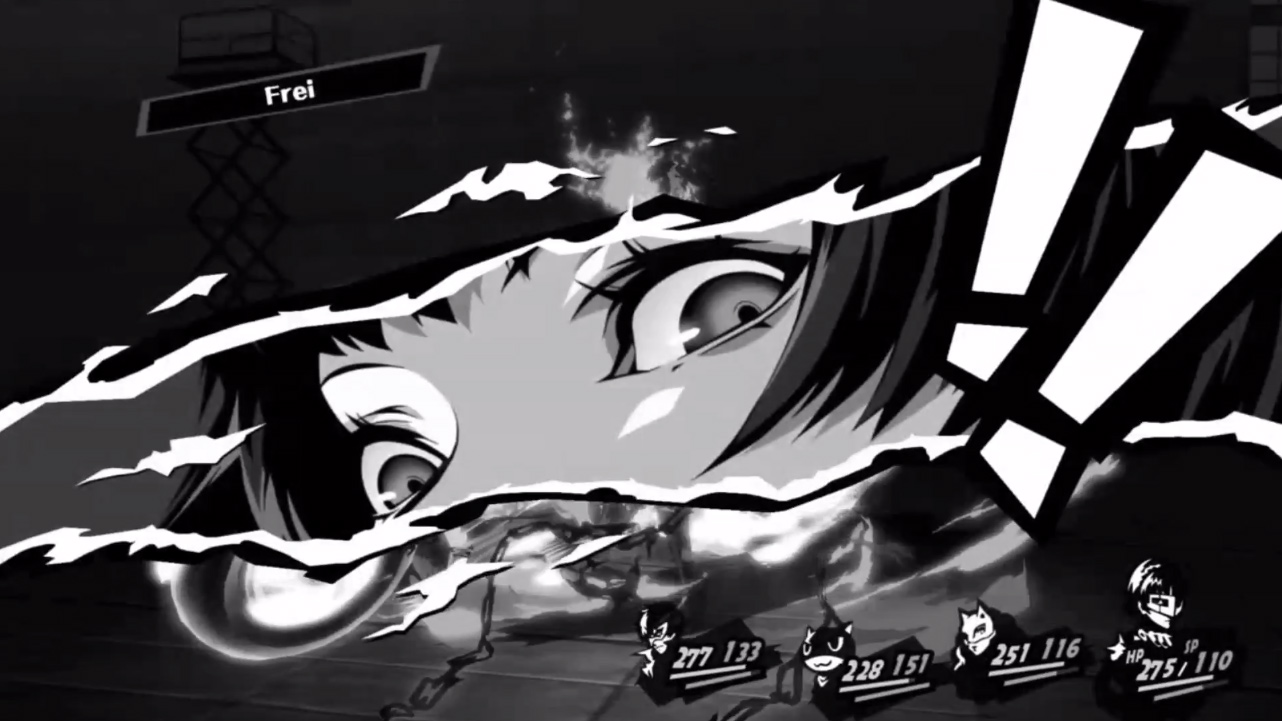
It is entirely consistent in this plot that Kamoshida’s “palace” (both a dungeon in the game and a stylized representation of his state of mind) is a gaudy, glitzy medieval castle with busts of girls and slapstick volleyball launchers and disproportionately cartoonish guards and led by a wreck in skivvies and fur mantle with a bikini-clad clone of Ann in tow.
However, I can’t buy that this drivel is what fills his mind. There’s a sleazy levity here that creates a clashing, grating dissonance with the events that just transpired.
An abuser knows exactly what they’re doing. They’re sociopaths that know how to manipulate people who are in situations unable to fend for themselves. They create dependence. They feed fear, guilt, and worthlessness in every fiber of a human being with calculated intent.
The tone of the palace is completely incongruent. The game charges forward with reckless aplomb, offending even the most mundane sensibilities by having us fight through pixies, phallic monsters, and jack o’ lanterns.
Was the game mocking me? Was the game mocking itself? Never before have I docked a game for tone consistency. But if a game opens up with emotional, physical, sexual abuse leading into a suicide attempt, it better damn well keep it consistent.
I put the game down for a couple weeks after that. I couldn’t bring myself to play it.
Watch us multiply
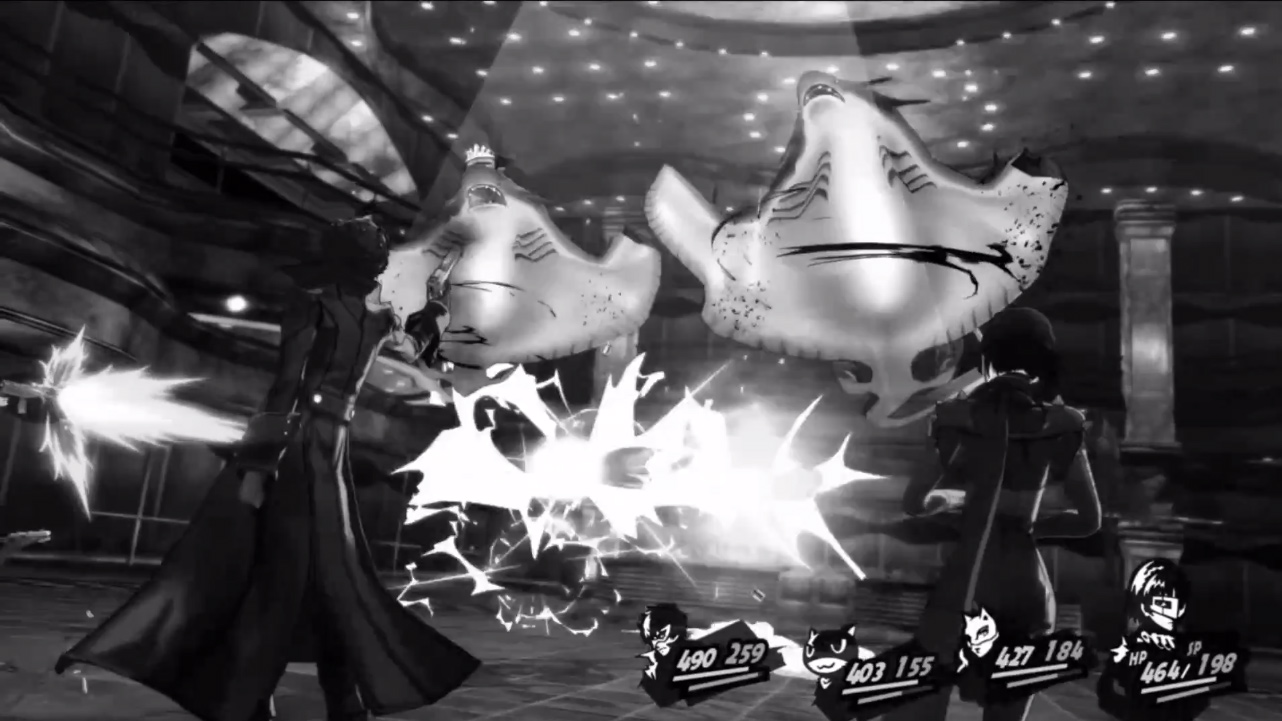
I grit my teeth and powered through Kamoshida’s palace, giving Atlus an uncomfortable amount of emotional leeway. We’re shown another character, Yusuke, introduced to us through a first person perspective reaching for Ann before Joker and Ryuji step in at the last minute. Apparently, this was going to be our next party member.
Oh hell the fuck no.
I’m not going to have someone who can’t keep his hands to himself on the team, especially not after that bullshit with Kamoshida.
The next palace the party, colloquially now known as “Phantom Thieves”, attempts is that of Yusuke’s mentor. Yusuke’s personality does an instant 180 flip. He’s no longer creepy. He’s no longer obsessed with Ann. He’s no longer blackmailing the party. This is explained as Yusuke being socially awkward, and he’s changed now that his mentor’s actually a bad guy.
And we’re back to the tone problem: trying to chalk up the entire series of events to comic social awkwardness. After Kamoshida, though, I wasn’t having it. You set a tone, Persona 5, and I damn well expect you to keep it.
Come to claim our rights
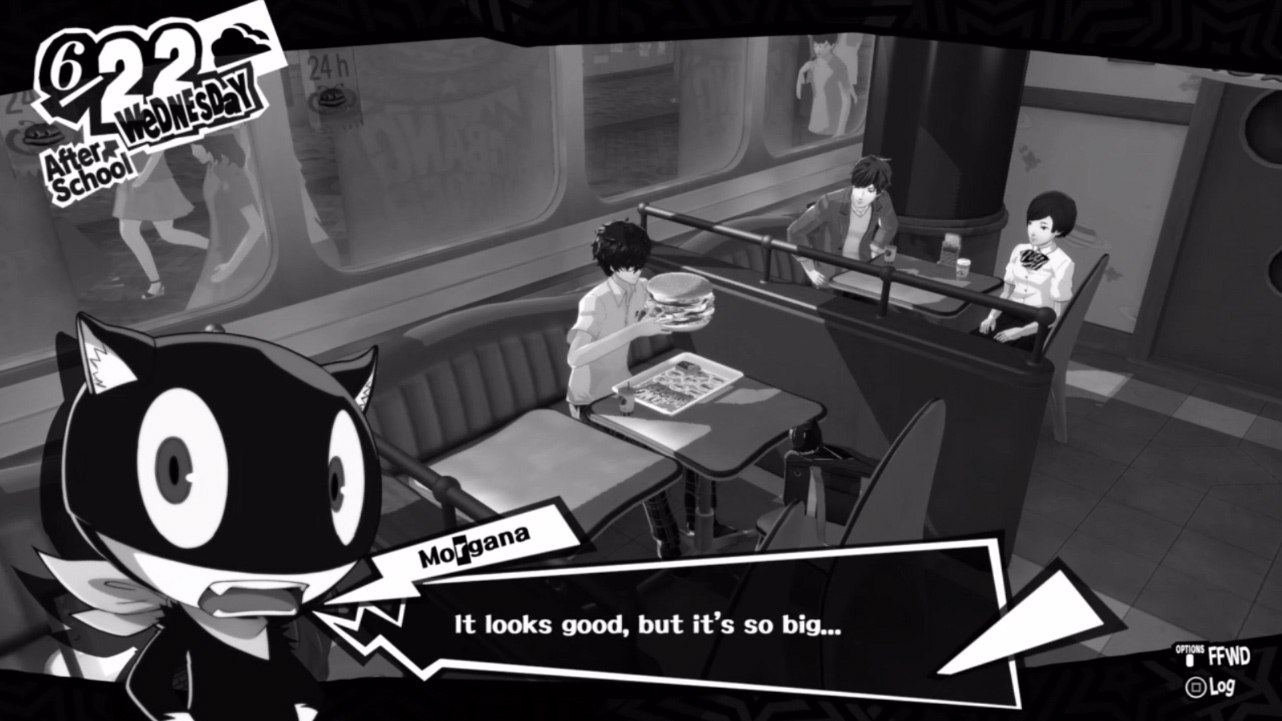
It sounds like I hate this game. I don’t. But I realize now that even though Persona 5 hurts me deeply at the beginning, and reopens the wound later on in moments of unnecessary gay panic and treatment of women, I love Persona 5 in a way that I don’t love Mass Effect 2 even if Mass Effect 2 never hurts me.
The story begins to pick up after that point. I don’t want to spoil any more, and really takes off closer to the end.
It’s got a simulated Tokyo subway system, with many of the stations pulled straight from real life and shows how ridiculously crowded the trains are. The suburbs in Joker’s Yongen-Jaya neighborhood (an intentional malapropism of the true to life Sangen-Jaya neighborhood) are beautifully detailed and the subtle effect of passing civilians disappearing at a distance reinforce the themes of a complacent society unused to the rebellion present in the soul of the Phantom Thieves.
I want to quickly call out the protagonist being of East Asian descent. I know, it’s nothing special given that the game is made by a Japanese developer, but this is still refreshing in an environment where East Asian men in media are either Bond villains or Bruce Lee. Representation matters.
No matter how much this game occasionally twists a knife in the butter of tone consistency or does something socially regressive, I still love it. The charm of this game is phenomenal. The core mechanics, the day-to-day interaction, the simulated Tokyo subway system with real world locations: it all brings a smile to my face.
It’s time
I know, I know.
That sounds awfully abusive.
But I’m excited to get back to Persona 5 March 31st when the extended cut edition, Persona 5 Royal, releases.
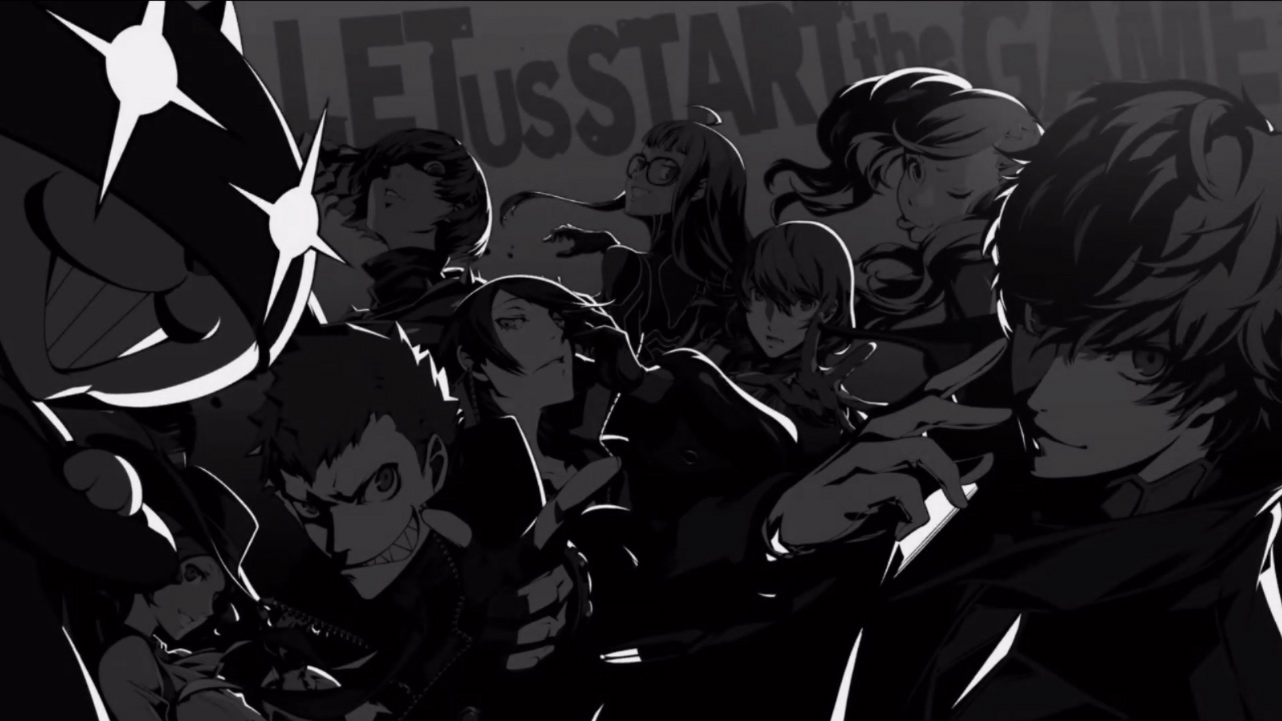
It seems like some rascals have stolen my heart.
When I took you in, I thought I was the one helping you… but it turns out it was the other way around.